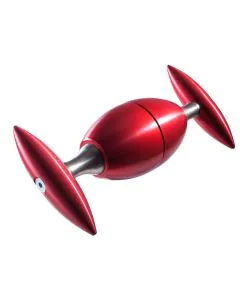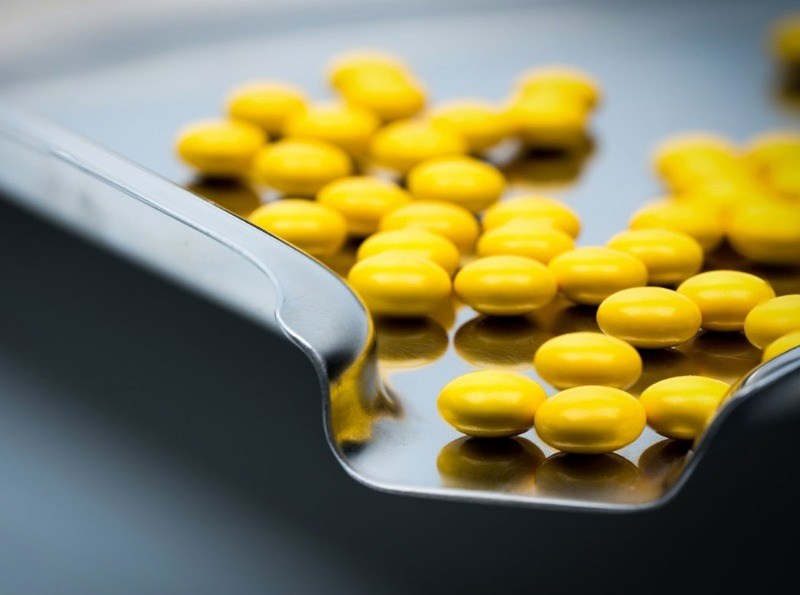The Different Types Of Tablet Coating Machines
Tablet coating machines are used to coat the surface of tablets with a thin coating of film. The film is employed mostly to:
- mask the colour, taste and smell of the drug
- protect the drug from physical or chemical harm
- control the release of the drug
- protect the drug from disintegrating when exposed to gastric fluids
- improve the appearance of the tablet – make a more elegant product
- incorporate drugs or materials in the coating to prevent any chemical incompatibility
Tablet coating machines work on the simple principle of applying the coating ingredients in the form of a solution to a group of tablets in a bed that may move horizontally or vertically. A concurrent flow of heated air helps to evaporate the solvent. The coating is equally distributed to the tablets through the movement of the bed.
There are several types tablet coating machines currently in the market today. The three principal types are described below.
Standard Coating Pan
This consists of a circular metal pan between about 15 and 200 cm (6 to 80 inches) in diameter that is tilted on a benchtop stand. The pan can be rotated with an electric motor.
A batch of tablets are loaded into the pan which is set to rotate. The rotating motion causes the tablets to tumble within the pan. Coating solution is applied to the rotating tablet bed by spraying in atomized form which can produce a faster and more even distribution than simply introducing it as a liquid.
Drying efficiency can easily be achieved by
- an immersion sword – the drying air is distributed through a perforated metal sword that is immersed in the bed.
- use of a baffled pan and diffuser (as marketed by Pellegrini) which allows the distribution of drying air uniformly over the surface of the tablets.
- an immersion tube system – the tube is immersed in the bed where the tube delivers heated air through the spray nozzle.
ニュースレターを購読
Perforated Pan
This equipment consists of a partial or full perforated drum that rotates on its horizontal axis, the whole system being enclosed in a sealed housing. Examples are:
- Accela-cota/Hi-coater Systems - with this equipment, the drying air is directed to the drum, passing through the tablet bed and is released through the perforations in the drum.
- Driacoater – Similar to the Accela-cota in the Driacoater, channels for directing the supply and exhaust air the drying air are integrated into the drum wall as reinforcing elements. is introduced through a hollow area located inside the drum’s periphery. During the drying process, the drum rotates the dip into the tablet bed and dry air passes up through and fluidizes the tablet bed with the air exhausting through the back of the pan.
- Glatt coater – this design uses fully perforated drums – a feature which combines maximum spray rates and extremely short process times. The horizontal process air flow minimises turbulence in the nozzle area and therefore also contributes to a perfect coating result. The drum geometry and the Glatt Fischer baffles mix and protect the product at the same time, guaranteeing a very even and exceptionally high-quality coating. The drum is integrated in the unique GC Smart housing, where all points are extremely easy to access; it is fully welded and the suspended drum is mounted at the rear without any front support to get in the way.
The coating solution in all of the perforated pan systems is applied through spraying nozzles which are positioned inside the drum.
Fluidized Bed/Air Suspension System
In a fluidized bed coater, the chamber is usually a vertical cylinder. Fluidization of the pellets is achieved by a column of air flowing upwards from the bottom centre of the cylinder. The tablets in the centre move upwards in the air flow and fall outwards and downwards to the chamber wall, re-entering the air stream from the bottom part of the column. Spray nozzles for introducing the coating solution are located in the bottom and top of the chamber.
The tablet’s core is frail and is prone to abrasion and chipping making it difficult to fully coat the tablet even under optimum conditions. This is due to the rough tablet to tablet impact as well as the tablet chamber contact.
There are two principal arrangements used to apply finely divided spray coating solutions to tablets:
- High Pressure Airless System – airless spray liquid are pumped at high pressure of between 1.7 and 20 MPa (250 and 3000 psig) through a small orifice of between 0.02 and 0.2 mm diameter, which results to a finely divided spray. The degree of atomization degree and spray rate are all controlled by fluid pressure, liquid viscosity and orifice size.
- Low Pressurized Air Atomized Systems – the liquid is pumped through a larger orifice of between 0.05 and 2.5 mm diameter a relatively low pressure of 35 – 350 kPa (5 to 50 psig). The low pressure air contacts the liquid stream at the top of the atomizer and a finely divided spray is achieved. The atomization degree is controlled by the fluid cap orifice, fluid viscosity, fluid pressure, and air cap design and air pressure.
Things to Consider in a Coating Machine
Perforated drum coating machines are popular in the industry and the following need to be addressed when considering the purchase of a machine:
- Air capacity – the amount of air flowing through the bed will determine the amount of water or solvent that can be removed during the coating process.
- Coating composition – the coating composition includes the ingredients that are applied to the surface as well as to the solvent that acts as a carrier for the ingredients. The solvent is removed during the coating process by the flow of air through the coating machine. To speed up this process the incoming air can be heated, however, there is a fine balance between the rate at which solvent can be evaporated and the rate at which the coating liquid can be introduced.
- Tablet surface area – it is easy to weigh a batch of tablets that are to be coated, to give an idea of the amount of coating solution that needs to be applied. However, it is the surface area of the tablets that determines the total amount of coating solution required. The size of the tablets and nature of their surface can significantly affect the coating conditions and quantities of solution required. The total area/weight ratio decreases quite significantly from a smaller to a larger tablet.
- Efficiency of equipment – conventional sugar coating efficiency is not very efficient and 60% is deemed to be acceptable. The efficiency depends on the coating material that is collected on the pan walls.
Main Coatings using a Coating Machine
Coating is the final step in the production cycle of pharmaceutical tablets. To be successful, the final product must demonstrate enhanced visual appeal compared with uncoated products.
Broadly there are two types of coating that may be applied to pharmaceutical tablets – sugar coating and polymer film coating.
Sugar coating is the traditional means of coating tablets, and takes place in 5 distinct steps:
- Sealing
- Applying a subcoat
- Smoothing
- Applying a finishing coat
- Polishing
Film coating is a more recent innovation and is applied in a single step using either a pan pour method or a pan spray method. Generally the same coating machine can be used for the both sugar coating and polymer film coating. The following are some characteristics and advantages of the three types of coating machines:
Traditional standard coating pan
- It is a continuous process
- Low drying time
- Can be use for both sugar coating and film coating
- The Pellegrini system can improve drying efficiency
- A rapid method of coating and therefore takes less time to coat the tablet than other methods
- Takes less time to coat the tablet
Perforated pan system
- Drying air directly passes to the drum
- Configuration of the air flow is possible in the case of the Glatt coater
- Shows increasingly versatile coating capability
- More efficient than other methods in drying of the tablet bed
Fluidized/Air Suspension System
- Coating solution is continuously applied from spray nozzles
- High pressure airless and low pressure atomizer systems produce very fine spray leading to uniform thin films
- Airless atomizer system is mainly used in air suspension coaters








